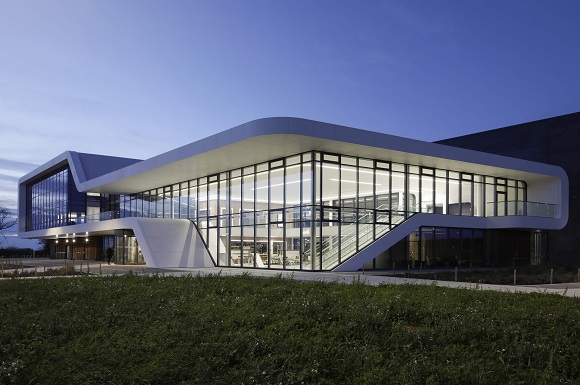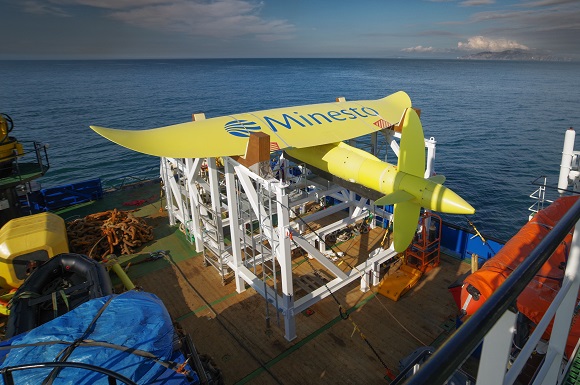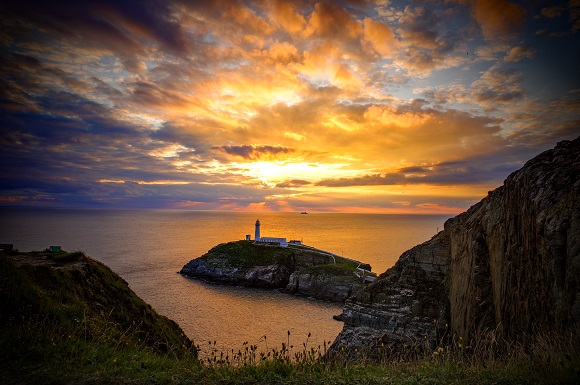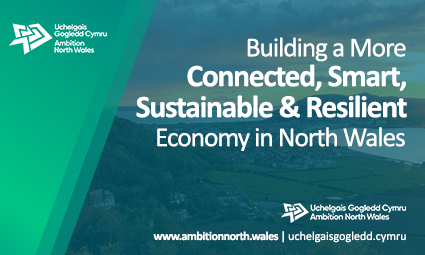Over recent weeks, due to the coronavirus pandemic and the world changing around us, we’ve come to appreciate those things that are at the heart of our day to day lives – health; food; company – our relationships with friends and family; and energy.
At a time when the sustainability of the very world in which we live has become the focus of our daily conversations it has become even more apparent that we need power to keep us going. We’ve seen clear skies and waters in some of world’s most polluted cities and wildlife returning to habitats that had become uninhabitable. There’s never been more evidence that sustainable energy is not just ‘nice to have’, it’s a necessity.
 Wales, and Anglesey in particular, can play a key role in meeting this need – with well-developed marine energy partnerships and projects in the pipeline gearing up to generate clean, low carbon electricity. And with this as a backdrop, state of the art support facilities, such as Menai Science Park (M-SParc) on Anglesey, are emerging as part of the mix, supporting the marine energy sector.
Wales, and Anglesey in particular, can play a key role in meeting this need – with well-developed marine energy partnerships and projects in the pipeline gearing up to generate clean, low carbon electricity. And with this as a backdrop, state of the art support facilities, such as Menai Science Park (M-SParc) on Anglesey, are emerging as part of the mix, supporting the marine energy sector.
The north west coast of Anglesey has long been identified for its powerful tidal resource. In this respect, the area was designated by the Crown Estate in 2013 as a marine energy ‘Demonstration Zone’. The zone is one of several around the United Kingdom which have been allocated by the Crown Estate in a bid to encourage and accelerate the development of marine energy. Each of the zones have been identified for their wave and tidal energy potential as well as access to appropriate infrastructure. The Anglesey zone was selected for its strong tidal resource, its grid connection, and its proximity to the port of Holyhead.
The designation has been the catalyst for several projects and initiatives – putting the region firmly on the map in terms of tidal energy, as well as reinforcing Anglesey’s well established ‘Energy Island’ vision.

Having secured the lease for the Crown Estate Demonstration Zone, local social enterprise, Menter Môn established ‘Morlais’ to manage the development and to secure maximum local benefit. Through Morlais, Menter Môn will sub-let areas within the zone to developers of tidal stream technology. Subject to receiving Welsh Government consent, the project has the potential to scale up over time to a 240MW generating capacity. Ten UK and international developers of tidal devices have already signed up and are ready to deploy their technology on a commercial scale at the zone.
A few miles up the coast, Swedish firm Minesto is developing its first utility-scale tidal project – which is the first low-velocity tidal energy project in the world. With its UK head office at Holyhead, Minesto has already started to deploy its Deep Green technology at the site. Following successful deployment and testing the aim is to install further devices and gradually expand the site to a commercial demonstration array of up to 10MW installed capacity.
Minesto and Morlais are collaborating to develop grid and cable infrastructure for the proposed developments to reduce costs and minimise the environmental footprint.

These projects are of course just the visible front end of the sector here in north Wales. To ensure projects such as these reach their full potential and deliver real benefits for the area, both require a supply chain and network of supporting industries and facilities.
M-SParc, located in Gaerwen in the centre of Anglesey, is playing a key role in this by co-ordinating and promoting the growth of the sector locally. A Bangor University company, M-SParc has provided a home to businesses engaged with the marine energy industry since it first opened its doors in March 2018. Two years on, it has become a hub for the sector; hosting events to showcase supply opportunities, providing business support as well as state of the art facilities and space for businesses to grow.
In partnership with Menter Môn and ‘Selkie’, the Wales-Ireland INTERREG funded marine energy consortium, M-SParc hosted the recent ‘A Sea of Opportunities’ supply chain event, attracting over 100 local and international delegates. The aim was to introduce potential suppliers and contractors to the marine energy sector, as well as gauge the level of interest from local companies. Speakers from Morlais, The Isle of Anglesey County Council, tidal turbine developers and local companies who already benefit from the sector addresses delegates, sharing their experiences and learning.

Developing a supply chain with the skills and capacity to service the tidal energy sector in general is critical to ensuring that Wales is best placed to take advantage of this emerging industry. The event on Anglesey highlighted those opportunities and raised awareness for the sector in general.
Companies based at M-SParc already involved in marine energy span a wide range of competences and expertise. Amongst them is Animated Technologies who provide marketing solutions in the form of explainer videos. Having recently expanded into augmented reality, they have created a software package which allows the visualisation of problems relating to underwater cabling. A leap forward for the company itself, but also potentially a significant step for the sector as a whole, reducing the need for expensive investigative underwater work when things go wrong.
Others include Papertrail specialising in documenting health and safety compliance and accountability for the marine industry; Pennant Flower Surveyor which works with off-shore energy developments, and renewable energy start-up Trydan Môn.
With this and world-renowned expertise on the doorstep at Bangor University Marine Sciences department and SEACAMS centre – Anglesey and north Wales have the right ingredients and ambition to innovate and become at the fore of the marine energy sector.
So, as coronavirus continues to dominate the news and our daily lives, planning for a future with an increased reliance on renewables for our energy must move up the agenda. We have long known the need for de-carbonisation and the increasing urgency for us all to take action in this regard. We are now being forced to re-assess priorities. Making renewables, including marine energy a significant component of the energy mix now more than ever seems like a no-brainer. In terms of climate but also in terms of economic benefits both on a local and wider level.











